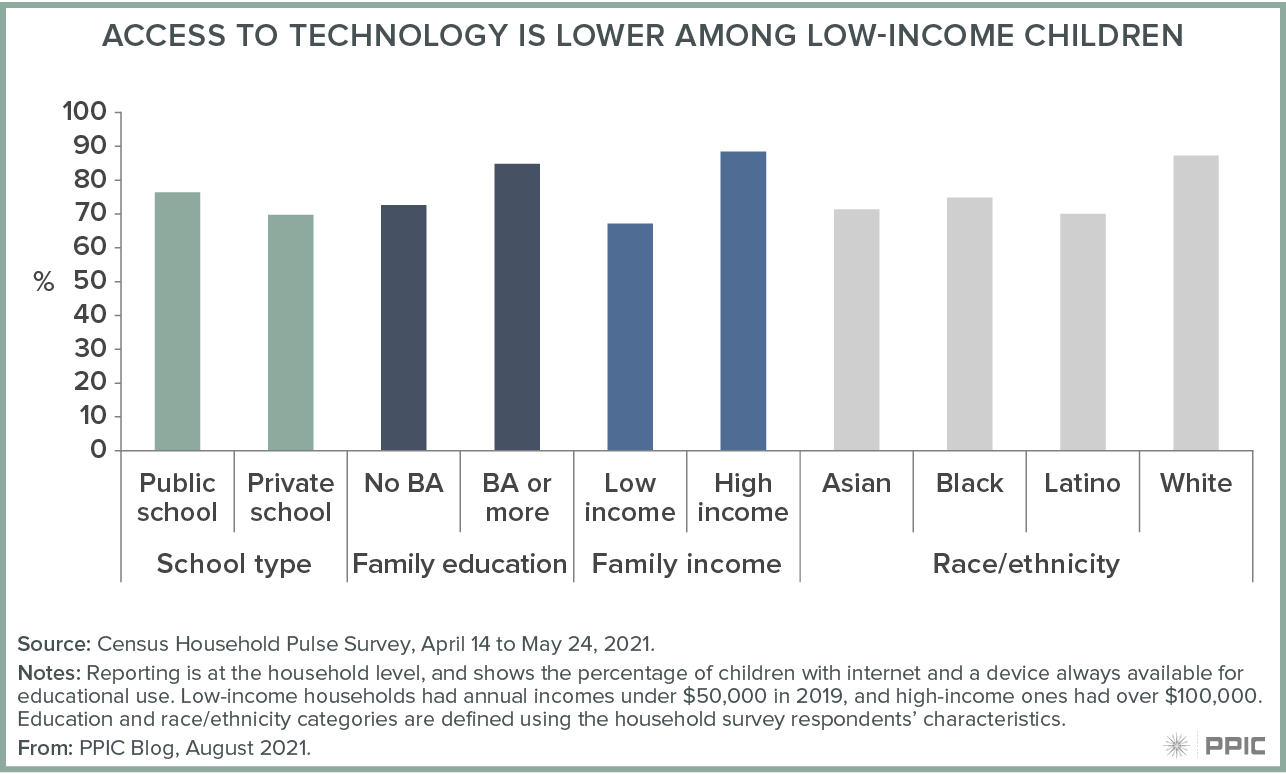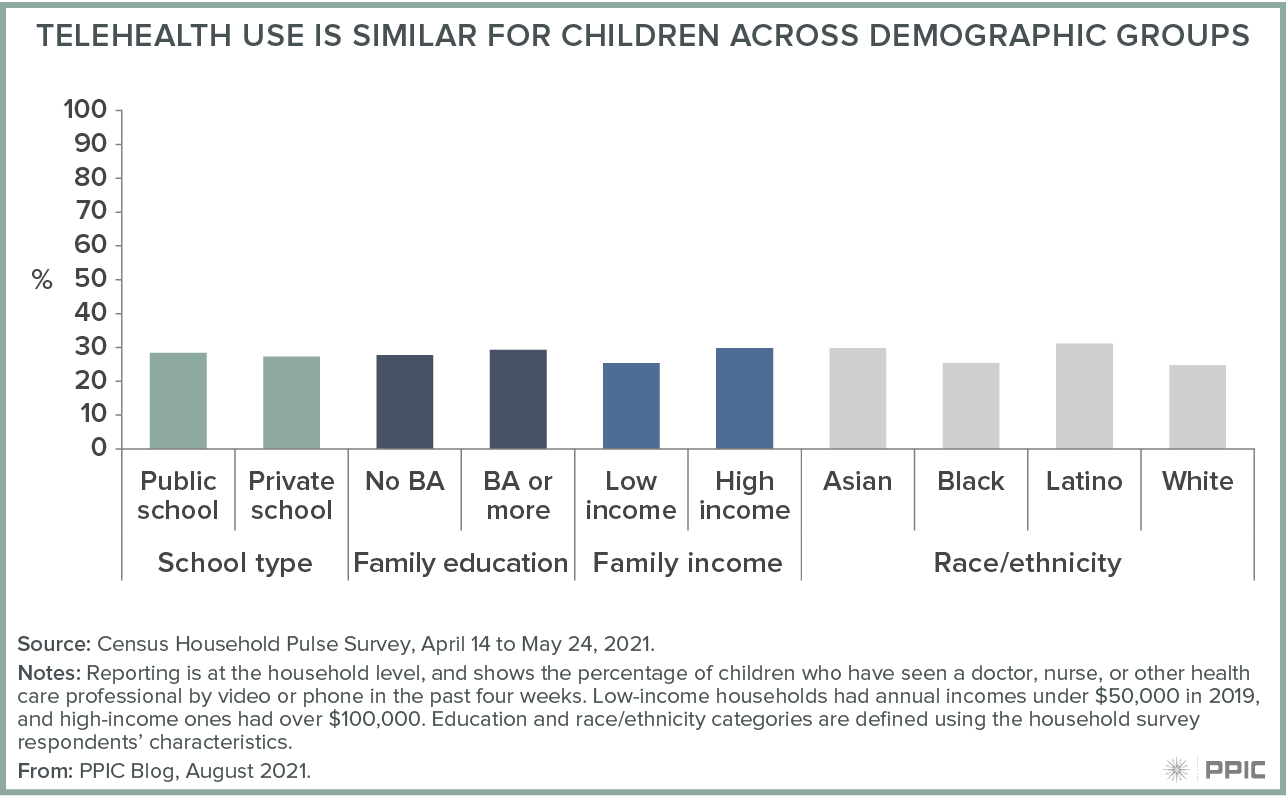The importance of technology in children’s education and health has soared during the pandemic. After California initiated a shelter-in-place order 17 months ago, K–12 instruction and health care rapidly shifted online. However, not all children had the resources to adapt fully to this new world. Access to devices and broadband has improved since then, but there is still work to be done.
California had a digital divide prior to the pandemic. Rural residents faced barriers to broadband, and Black, Latino, and low-income households lacked devices at home. As recently as the summer of 2020, California had a shortfall of one million devices. Over the past year, schools and public-private partnerships have been distributing laptops and internet hot spots. Now, a majority of children have access to a device for educational purposes, and landmark legislation to improve broadband access recently became law. But many children—particularly those in low-income families—still lag behind their peers in technology access. Private schools are more likely to have reopened for in-person instruction, reducing the need for consistently reliable internet and device access for educational purposes.

Nationally, mental health crises among children and adolescents constitute a larger proportion of pediatric emergencies during the pandemic, and evidence from Los Angeles finds connections between the pandemic and psychiatric emergencies among teens. And although children in Asian and Latino families have lower levels of access to technology, they are about as likely to use telehealth as children in white families. For families that lacked devices prior to the pandemic, new technology at home can improve access to both online learning and health care. Audio-only health services are an important resource, but video-based telehealth can give low-income families access to convenient, affordable mental health services.

Devices and connectivity will continue to be important for students and their families in the next phase of the pandemic. The legislature recently recognized the continuing importance of telehealth by extending coronavirus-related telehealth flexibility until the end of the year. The highly transmissible delta variant could complicate California’s planned return to in-person K–12 education for the 2021–22 school year. Students under age 12 are not yet eligible for vaccines.
Ensuring children’s access to technology will be important beyond the pandemic. Nationwide, two in ten districts have adopted or plan to adopt virtual programming, and 40 percent of the largest 100 urban districts plan to offer a virtual option in fall 2021. Schools will continue to use digital platforms (such as Google Classrooms). Telehealth is also likely to play a key role in the longer term.
Improved access to internet and devices since March 2020 represent real gains in connectivity for children and their families. Although online versions of education and health care are not equivalent to in-person interaction, equitable access to these alternatives will continue to be important.
Topics
coronavirus COVID-19 digital divide distance learning Health & Safety Net internet access K–12 Education mental health online learning Population racial disparities telehealthLearn More

Achieving Digital Equity for California’s Students

Building a Community-Owned Broadband Network in Imperial County

California’s Digital Divide

Commentary: Narrowing the Digital Divide with Pandemic Benefits

How Has California Narrowed Its K–12 Digital Divide?



